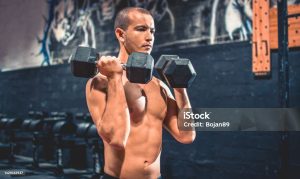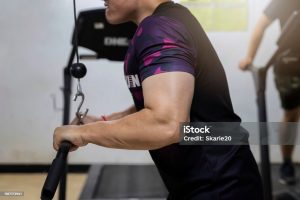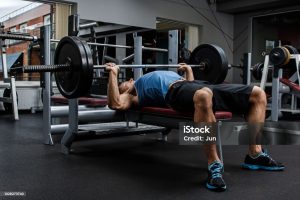
Best Workout Split for Building Muscles
Introduction
When planning your weekly workout routine, it’s essential to consider the various workout splits available to target different muscle groups effectively. Options include push-pull routines, full-body workouts, and bro splits, which focus on individual muscle groups. The best choice ultimately depends on your personal preferences, schedule, and body type. In this overview, we’ll examine the different workout splits to help you identify the one that aligns best with your fitness goals and physical needs.

Bro Split
Let’s start with the bro split, a method where you dedicate each day to a specific muscle group. On a typical 5–6 day training schedule, this could mean focusing on the chest on Monday, shoulders on Tuesday, and legs on Wednesday. This approach, which gained popularity during the golden era of bodybuilding, allows for intense concentration on each muscle group, potentially leading to deep fatigue and soreness, which can encourage muscle growth. However, while it was a go-to strategy in the past, today’s bodybuilders often modify their workout splits to better align with their changing goals and needs.

Pros and Cons of Bro Split
Focusing on one muscle group per day offers the benefit of allowing you to concentrate fully and exhaust that specific muscle, which could lead to enhanced muscle activation and growth. However, this method has some limitations, especially for natural lifters who might need more frequent stimulation to maximize muscle development. For example, if someone trains their biceps on Monday, it might take 2–3 days for the muscles to fully recover. After this recovery period, the biceps could go several more days without being worked again, which may result in muscle degradation rather than growth.

Muscle protein synthesis
Muscle protein synthesis is the process through which the body builds and repairs muscle tissues. When steroids are involved, this process remains elevated for an extended period, even after training a specific muscle group. As a result, someone using steroids might avoid entering a catabolic state—where muscle breakdown occurs—even if they don’t train the same muscle group for 7-8 days. This differs from natural lifters, who would see a decline in muscle protein synthesis much sooner. Therefore, relying on steroids for sustained muscle protein synthesis may lead to less frequent muscle stimulation, which could limit overall muscle growth. Moreover, those using steroids can maintain high levels of muscle protein synthesis throughout the week, even with minimal focus on certain muscles—an advantage that natural individuals cannot achieve.

Attempting to replicate the training methods of professional bodybuilders who use steroids may not produce the same results for natural lifters. Without steroids, adhering to a traditional “bro-split” routine—where different muscle groups are targeted on specific days—may be less effective. Over time, many have shifted away from bro-split routines in favor of alternative training splits. However, one aspect of bro-splits remains relevant for natural lifters: regardless of how often muscles are stimulated, there is a genetic ceiling on how much muscle mass can be gained. As a result, whether you opt for more frequent muscle stimulation or stick with a traditional bro-split, it may not make a significant difference in reaching your genetic potential for muscle growth.

The push-pull routine is a training method that alternates between push and pull exercises, with a separate day dedicated to leg workouts. This approach is popular for its ability to effectively stimulate muscles and is widely regarded as beneficial for muscle building, whether you’re training naturally or with the aid of steroids. Even prominent figures in bodybuilding, such as multiple-time Mr. Olympia champion Chris Bumstead, have incorporated the push-pull-legs routine into their regimen. By structuring your weekly workouts around push, pull, and leg days, you can maximize muscle stimulation. The push-pull routine also offers flexibility in terms of intensity and frequency, making it one of the most effective training methods for both natural and enhanced athletes.
To keep muscle protein synthesis consistently elevated, it’s recommended to train more than once a week throughout the year. By regularly stimulating your muscles, you help prevent them from entering a catabolic state, which is when muscle breakdown occurs. This approach supports continuous muscle building and is beneficial for both natural lifters and those using steroids. Consistently engaging the muscles not only promotes growth but also helps maintain the progress you’ve made, making it an optimal strategy for sustained muscle development.

Approach to Full-Body Workout
A full-body workout involves targeting all major muscle groups in a single session, usually three times a week. This comprehensive approach covers the chest, biceps, back, forearms, traps, legs, calves, lower back, and shoulders in each workout. While this routine ensures that all muscles receive regular stimulation, the intensity and volume for each specific muscle group might not be maximized. Some individuals, like Jeff Nippard, have found success with this method, but personal experiences can vary. The effectiveness of full-body workouts depends on individual preferences, goals, and how well one’s body responds to this training style.

Personal Experience and Recommendations
While some people may thrive with a full-body workout approach, individual results can vary. Beginners should experiment with different workout splits to discover what best suits their bodies. Trying out various strategies, including combining different muscle groups in a single session, can be advantageous. Ultimately, the best workout routine depends on personal schedule, genetics, and preferences. Doing thorough research and testing different approaches is essential to finding the most effective strategy for achieving individual fitness goals.











